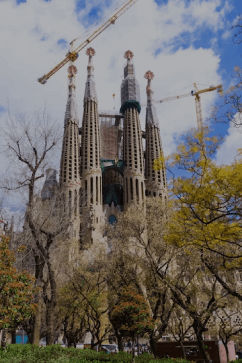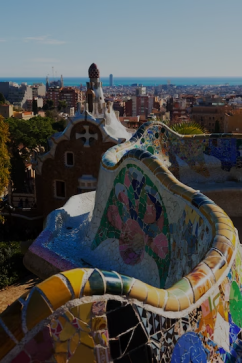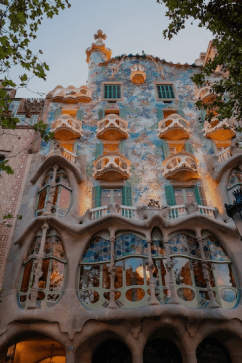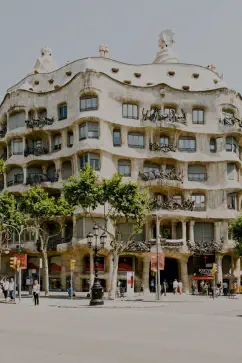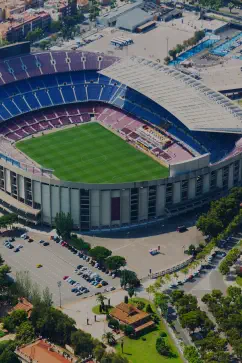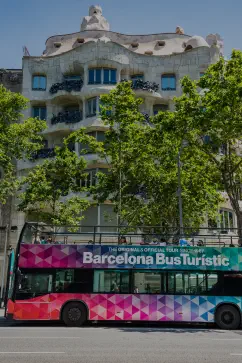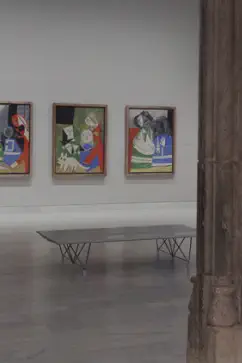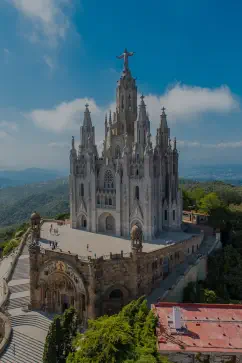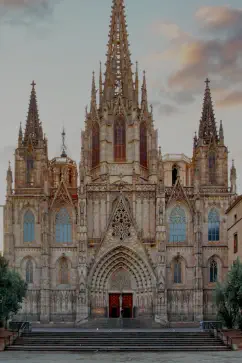Poble Espanyol
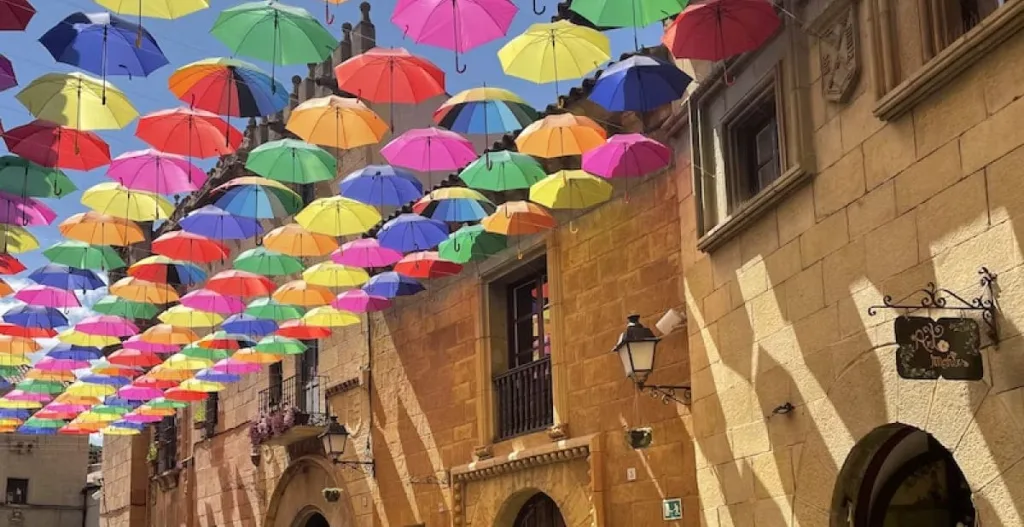
About Poble Espanyol
Poble Espanyol, located in Barcelona, Spain, is a captivating depiction of the country’s cultural diversity. Often referred to as the “Spanish Village Barcelona” or “Poble Espanyol de Montjuïc,” it was crafted for the 1929 Barcelona International Exposition. This immersive attraction encompasses a charming replication of a typical Spanish village. Within its streets and squares, this Spanish Village showcases architectural styles from different Spanish regions, offering visitors an architectural journey through Spain’s diverse heritage.
Poble Espanyol goes beyond static representation; it’s a living space where artisans craft ceramics, glass, textiles, and other traditional items. The village bustles with creativity and culture, hosting events, concerts, and exhibitions year-round. From Andalusia to Catalonia, each area features authentic buildings that encapsulate regional charm.
One of its highlights is the Fran Daurel Museum, boasting a remarkable collection of contemporary Spanish art, providing insight into Spain’s artistic evolution. Poble Espanyol is a dynamic testament to Spain’s multifaceted culture, offering an engaging and enlightening experience that showcases its architectural beauty, craftsmanship, and artistic legacy.
History of Poble Espanyol
Poble Espanyol, also known as the “Spanish Village,” has a fascinating history that traces back to the 1929 Barcelona International Exposition. The exposition aimed to showcase Spain’s artistic and cultural diversity to the world. To achieve this, a group of architects, including Josep Puig i Cadafalch, was tasked with creating a village that would encapsulate the essence of different Spanish architectural styles.
Built on Montjuic hill in Barcelona, Poble Espanyol de Montjuic was initially conceived as a temporary exhibit. The village was designed to represent the diverse architectural heritage of various regions of Spain, capturing the charm of traditional Spanish villages in a single location. The architectural team meticulously recreated streets, plazas, and buildings from different parts of Spain, incorporating a wide range of architectural elements, styles, and materials. The result was a captivating blend of Spanish culture and history brought together in one place. Poble Espanyol’s popularity among both visitors and locals led to its preservation beyond the exposition’s duration. The site evolved into a cultural and artistic space, hosting events, workshops, and exhibitions.
Today, Poble Espanyol continues to provide a window into Spain’s cultural heritage, offering a unique experience where visitors can explore diverse architectural styles, artistic creations, and traditional crafts, all within the charming setting of a “Spanish Village Barcelona” that beautifully encapsulates the essence of Spain.
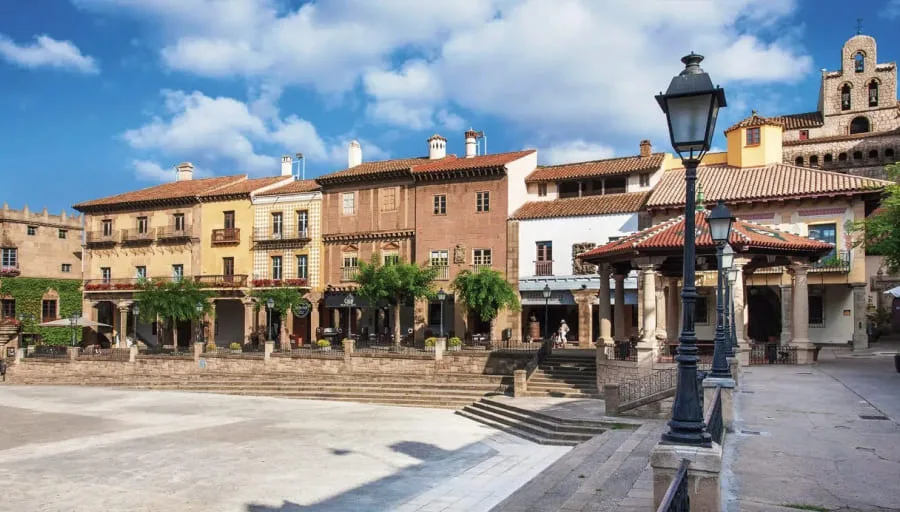
Tips for your visit
- Discover Spanish Fine Art: Visit the Museu Fran Daurel in Poble Espanyol de Montjuic and check out the Eclectic collection of 300 works by renowned contemporary artists.
- Enjoy a Picnic at The Sculpture Garden: Take a trip to Sculpture Garden at the Spanish Village, set a picnic on a slope, and enjoy a splendid view of the city.
- Take a Trip Down Memory Lane: Explore the latest addition to Poble Espanyol, a multimedia facility offering an immersive experience of Spanish festivals, and take a sensorial journey to historical events.
- Go Handicraft Shopping: Visit this Spanish village in Barcelona to buy handicrafts made by traditional artisans from around Spain, including clothing, belts, masks, baskets, ceramics, jewelry, musical instruments, and more.
- Comfortable Shoes: Poble Espanyol involves walking on various surfaces, so wear comfortable shoes for exploring.
- Sample Traditional Spanish Cooking: Enjoy a diverse range of traditional Spanish cuisine in snug cafes, terrace bars, and fine dining restaurants at Poble Espanyol.
- Relax and Explore: Take your time to stroll through the streets, alleys, and plazas. Discover hidden corners and enjoy the architectural details.
- Kids’ Activities: If you’re visiting with children, check if there are any special activities or workshops designed for young visitors.
Tickets
Discover the captivating Poble Espanyol, a harmonious fusion of history, culture, and leisure in Barcelona. Obtain tickets to this enchanting Spanish Village of Barcelona, nestled in Montjuïc, from 10 am at a modest price of €9.00. Delight in the exquisite architectural wonders, immerse in craft workshops, explore the contemporary art museum, and relish enthralling exhibitions and audiovisual installations.
For an evening of tranquility, the Poble Espanyol by-night ticket, priced at €7.00, offers a serene stroll and splendid views of Barcelona. Additionally, the Poble Espanyol + MNAC combined ticket, at €20.00, opens the gateway to two iconic Montjuïc destinations: Poble Espanyol and Museu Nacional d’Art de Catalunya.
How to arrive
Getting to Poble Espanyol, the alluring Spanish Village in Barcelona, is quite convenient with various transport options.
By Metro: Take metro L1 (red line) or L3 (green line) to Plaça Espanya. Pass the Venetian towers, turn right at the fountain, and ascend to Poble Espanyol. Alternatively, take escalators near MNAC for an easier route.
By Bus: Lines 13, 23, and 150 buses conveniently stop at Poble Espanyol de Montjuïc. Avoid cable cars or zipper trains, as they require extra walking from a different part of Montjuïc Hill.
By Taxi: Taking a taxi to Poble Espanyol is a straightforward option. Simply instruct the driver to take you to “Poble Espanyol de Montjuïc.”
By Walk: For those with an adventurous spirit, you can walk from the Plaça Catalunya area, which takes approximately 45 minutes along Gran Vía to reach Plaça d’Espanya.

